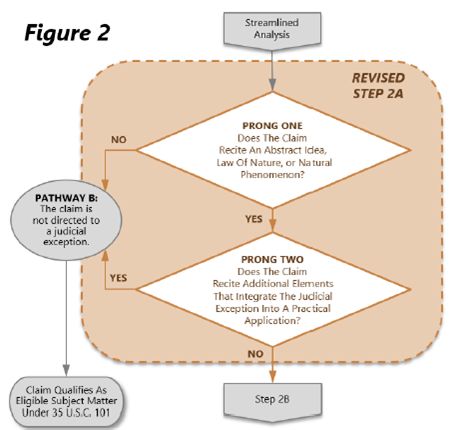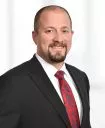On March 18, 2024, the USPTO issued a memorandum on means-plus-function and step-plus-function claim limitations under 35 USC § 112(f). Although the memorandum covered several aspects of 35 USC § 112(f), this article focuses primarily on computer-implemented inventions.
35 USC § 112(f) provides:
ELEMENT IN CLAIM FOR A COMBINATION.—An element in a claim for a combination may be expressed as a means or step for performing a specified function without the recital of structure, material, or acts in support thereof, and such claim shall be construed to cover the corresponding structure, material, or acts described in the specification and equivalents thereof.
History of Means (Or Step) Plus Function
In Halliburton Oil Well Cementing Co. v. Walker, 329 U.S. 1, 8, 67 S.Ct. 6, 9-10, 19 L.Ed. 3 (1946), the U.S. Supreme Court invalidated claims that "do not describe the invention but use 'conveniently functional language at the exact point of novelty'." In response to the Halliburton Oil Well decision, Congress enacted 35 U.S.C. § 112, paragraph six, now 35 U.S.C. § 112(f), which specifically authorized the use of means (or step) plus function elements. The intent of this statute was to cure the specific problem of claiming certain structural devices that do not lend themselves well to being defined by structure alone.
As a compromise in enacting this legislation, two limitations were placed on such means (or step) plus function elements. First, the scope of such an element was limited to the corresponding structure, material, or acts recited in the specification that perform the recited function, and equivalents thereto. Second, a means (or step) plus function element could not be the sole element of a claim.
Avoiding § 112(f) Interpretations of Computer-Implemented Claim Limitations
Despite certain advantages that may be attributed to means-plus-function claiming, patent applicants may often wish to avoid a § 112(f) interpretation that would limit them to the scope of the subject matter recited in the specification and equivalents thereof. In these circumstances, patent applicants must select their claim terminology carefully.
The USPTO memorandum notes the common three-part test employed by patent examiners for determining the application of § 112(f) during patent examination, which begins by considering whether "the claim limitation uses the term 'means' or 'step' or a term used as a substitute for 'means' that is a generic placeholder (also called a nonce term or a non-structural term having no specific structural meaning) for performing the claimed function." While "there are no absolutes or approved lists of terms" that patent examiners consider "nonce" terms, the USPTO memorandum does provide guidance as to which terms in the field of computer-implemented technology would not be considered "nonce" terms. In particular, terms such as "code," "application," "program," and "user interface code" have been found to connote sufficient structure in computer-implemented inventions to avoid a means-plus-function interpretation. Thus, the use of these terms is less likely to result in a patent examiner applying a § 112(f) interpretation to the claims.
Adequate Support for § 112(f) Limitations
Where a § 112(f) interpretation does apply, the USPTO memorandum makes clear that it is important to determine that means-plus-function elements are adequately supported in the specification under 35 USC § 112(a) and meet the requirements of 35 USC § 112(b).
The memorandum states that "The proper test for meeting the definiteness requirement of a § 112(f) limitation is that the corresponding structure must be disclosed in the specification itself in a way that one skilled in the art will understand what structure will perform the entire recited function. If there is no disclosure of structure for performing the entire recited function, the claim fails to satisfy the requirements of § 112(b) and should be found indefinite." In this respect, it is common practice for patent examiners to review the patent's specification to determine whether the means-plus-function language is tied to particular structural examples or elements.
Special Considerations for Computer-Implemented Claim § 112(f) Limitations
The memorandum states:
"For computer-implemented § 112(f) claim limitations, the specification must disclose an algorithm for performing the claimed specific computer function, or the claim should be found indefinite. The sufficiency of the disclosure of the algorithm must be determined in light of the level of ordinary skill in the art. Applicant may express the algorithm in any understandable terms including as a mathematical formula, in prose, in a flow chart, or in any other manner that provides sufficient structure. A claim that recites a means for performing a specific computer-implemented function and only discloses a general purpose computer as the structure designed to perform that function would not be an adequate disclosure of the corresponding structure to satisfy the requirements of § 112(b). See MPEP section 2181, subsection II (B)."
As stated in MPEP § 2181 (II)(B), an algorithm is defined broadly, for example, as "a finite sequence of steps for solving a logical or mathematical problem or performing a task." Microsoft Computer Dictionary, Microsoft Press, 5th edition, 2002. Applicant may express the algorithm in any understandable terms including as a mathematical formula, in prose, in a flow chart, or "in any other manner that provides sufficient structure."
In practice, it is important to be sure that the specification describes each computer-implemented function with as much detail as possible. In many instances, a flowchart in the drawings with a corresponding description in the specification can be relied on to support software-implemented functionality.
Enablement
For a computer-implemented means-plus-function claim limitation invoking 35 U.S.C. 112(f), the Federal Circuit has stated that "a microprocessor can serve as structure for a computer-implemented function only where the claimed function is 'coextensive' with a microprocessor itself." ..."'It is only in the rare circumstances where any general-purpose computer without any special programming can perform the function that an algorithm need not be disclosed.'" EON Corp. IP Holdings LLC v. AT&T Mobility LLC, 785 F.3d 616, 621-622, 114 USPQ2d 1711, 1714 (Fed. Cir. 2015). Thus, it is important in practice to consider what other components (e.g., sensors, transceivers, etc.) are required in conjunction with a microprocessor to affect the claimed function and to describe those components as well.
To claim a computer operation by the function alone, i.e., without a supporting algorithm, is "pure functional claiming." The MPEP takes the position that such a claim is nothing more than an expression of a desired result without any enabling teaching as to how to achieve such a result. It is, therefore, more important when a function is performed entirely within the software of a microprocessor to provide a detailed algorithm or flow chart demonstrating the implementation of the claimed function.
Written Description
For computer-implemented inventions, the written description requirement of 35 USC § 112(a) has different requirements than enablement. Specifically, in fulfilling the enablement requirement, the specification can omit features that are well known to those with ordinary skill in the art. However, such is not the case with regard to the written description requirement.
As required by the statute, "...the patentee must disclose sufficient information to demonstrate that the inventor had possession of the invention at the time of filing...".
The MPEP states that:
"To satisfy the written description requirement, a patent specification must describe the claimed invention in sufficient detail that one skilled in the art can reasonably conclude that the inventor had possession of the claimed invention....Possession may be shown in a variety of ways, including description of an actual reduction to practice, or by showing that the invention was "ready for patenting" such as by the disclosure of drawings or structural chemical formulas that show that the invention was complete, or by describing distinguishing identifying characteristics sufficient to show that the applicant was in possession of the claimed invention."
This requirement is generally interpreted to mean that, for computer-implemented inventions, the inventor must disclose more than the functions intended to be performed. Without detailed supporting structure, i.e., algorithms, the claim is alleged to pre-empt the entire function, when the inventor is only entitled to claim the means by which the inventor invented performing the function.
Providing a detailed specification will not necessarily result in a narrow claim scope. However, under current USPTO practice, failing to provide a description of at least one specific application of a computer-implemented invention in the specification could result in the claim being held invalid or unpatentable. In particular, it is best if the description of at least one specific application of the computer-implemented invention includes details narrower in scope than the functional language of the claim. This will prevent the Examiner from alleging that the claim is an abstract idea and the inventor is attempting to preempt all applications of the abstract idea.
Troublesome Red Flags
(a) Automation of Known Processes
A number of cases have held that merely automating a well-known process by implementing it on a computer is not patent-eligible subject matter.
For example, in the discussion of Example 40 in the USPTO subject matter eligibility guidelines, it states:
"The network appliance that performs the comparison step is also recited at a high level of generality, and merely automates the comparison step. Each of the additional limitations is no more than mere instructions to apply the exception using a generic computer component (the network appliance). The combination of these additional elements is no more than mere instructions to apply the exception using a generic computer component (the network appliance). Accordingly, even in combination, these additional elements do not integrate the abstract idea into a practical application because they do not impose any meaningful limits on practicing the abstract idea. The claim is directed to the abstract idea."
In view of this guidance, patent applicants should avoid describing the invention as the automation of known processes. Patent applicants should likewise avoid admitting that the claimed procedures can, or have previously been, done manually, or that the "invention" is merely intended to automate well-known procedures.
Recognized exceptions to this rule include (1) processes that improve the functionality of the computer that implements the process, and (2) processes that actually improve the well-known process, not merely automate it.
Accordingly, be careful in the specification to avoid describing an invention as a system or device that automates a previously known, manually implemented process. Instead, the description should focus on describing what is being done and carefully explain how the claimed process improves the prior art rather than automates it. Where possible, improvements should be tied to the intrinsic functioning of the computer implementing the process—in other words, demonstrating that the improvement cannot exist separately from the computer.
(b) Mental Processes
Acommon rejection being made under 35 USC § 101 alleges that the claimed invention is merely a "mental process." When considering whether to apply § 101 in these instances, patent examiners consider whether the claimed computer-implemented process is one that could be performed in the human mind or by humans without the aid of a computer.
One section from the MPEP states:
"... claim whose entire scope can be performed mentally, cannot be said to improve computer technology. Synopsys, Inc. v. Mentor Graphics Corp., 839 F.3d 1138, 120 USPQ2d 1473 (Fed. Cir. 2016) (a method of translating a logic circuit into a hardware component description of a logic circuit was found to be ineligible because the method did not employ a computer and a skilled artisan could perform all the steps mentally). Similarly, a claimed process covering embodiments that can be performed on a computer, as well as embodiments that can be practiced verbally or with a telephone, cannot improve computer technology. See RecogniCorp, LLC v. Nintendo Co., 855 F.3d 1322, 1328, 122 USPQ2d 1377, 1381 (Fed. Cir. 2017) (process for encoding/decoding facial data using image codes assigned to particular facial features held ineligible because the process did not require a computer)."
To avoid this type of rejection, it can be helpful to explain in the specification that the use of the computer enables a process that could not have previously been done by the human mind. For example, perhaps the computer adds a level of precision that is necessary for a specific field, and thus could not have previously been done manually. Oftentimes, the computer may enable functions (through the use of other components) that are beyond the ability of the human mind, in which case it can be argued that the claimed process is not a "mental process."
(c) Practical Applications
The USPTO patent eligibility guidance includes the addition of step 2A, Prong Two.

Prong Two of Step 2A involves determining whether the judicial exception is integrated into a practical application. As briefly stated in Figure 2 above, "Does the claim recite additional elements that integrate the judicial exception into a practical application?"
In the past, court decisions addressing 35 USC § 101 have tended to focus on the individual elements in the claims to determine if they are similar to elements that had previously been determined to be patent-eligible or not. However, instead of matching claim elements to prior Federal Circuit decisions, Interval Licensing LLC v. AOL, Inc. provides some common sense suggestions for identifying a patent-eligible claim, and this guidance was adopted by the USPTO in October 2019. The guidance is focused not on what the elements of the claim are, but rather on whether the claim provides a sufficiently specific (practical) solution to the problem being solved so that it does not preempt all uses of the claimed abstract idea beyond the application envisioned by the claim.
In Interval Licensing LLC v. AOL, Inc., the Court set out a detailed analysis of how to determine whether a claim is or is not abstract. The decision discussed the old cases of O'Reilly v. Morse and Wyeth v. Stone. Each of those cases (Wyeth and Morse) involved patents that included both patent-eligible claims and ineligible claims. In Interval Licensing, the Court stated:
"In both Wyeth and Morse, then, the inventors received a patent containing at least one claim directed to a particular technical solution to a problem, whether for cutting ice or for printing at a distance using electromagnetism; but each inventor also lost a claim that encompassed all solutions for achieving a desired result, whether for cutting ice or for printing at a distance using electromagnetism. In other words, those latter claims failed to recite a practical way of applying an underlying idea; they instead were drafted in such a result-oriented way that they amounted to encompassing the "principle in the abstract" no matter how implemented."
For example, the ineligible claim in Wyeth was for an exclusive title to the art of cutting ice by means of any power, other than human power. The eligible claim was "for the particular apparatus and machinery to cut ice, described in the specification." In Morse, the ineligible claim encompassed the use of "electro-magnetism, however developed, for making or printing intelligible characters, letters, or signs, at any distances."
Accordingly, to the extent possible, try to include a practical application for a solution to a prior art problem that does not encompass all possible attempts to solve the problem.
The bottom line is that protecting computer-implemented inventions in the U.S. can be tricky. It is a good idea to first discuss any application with U.S. counsel before filing.
The content of this article is intended to provide a general guide to the subject matter. Specialist advice should be sought about your specific circumstances.


